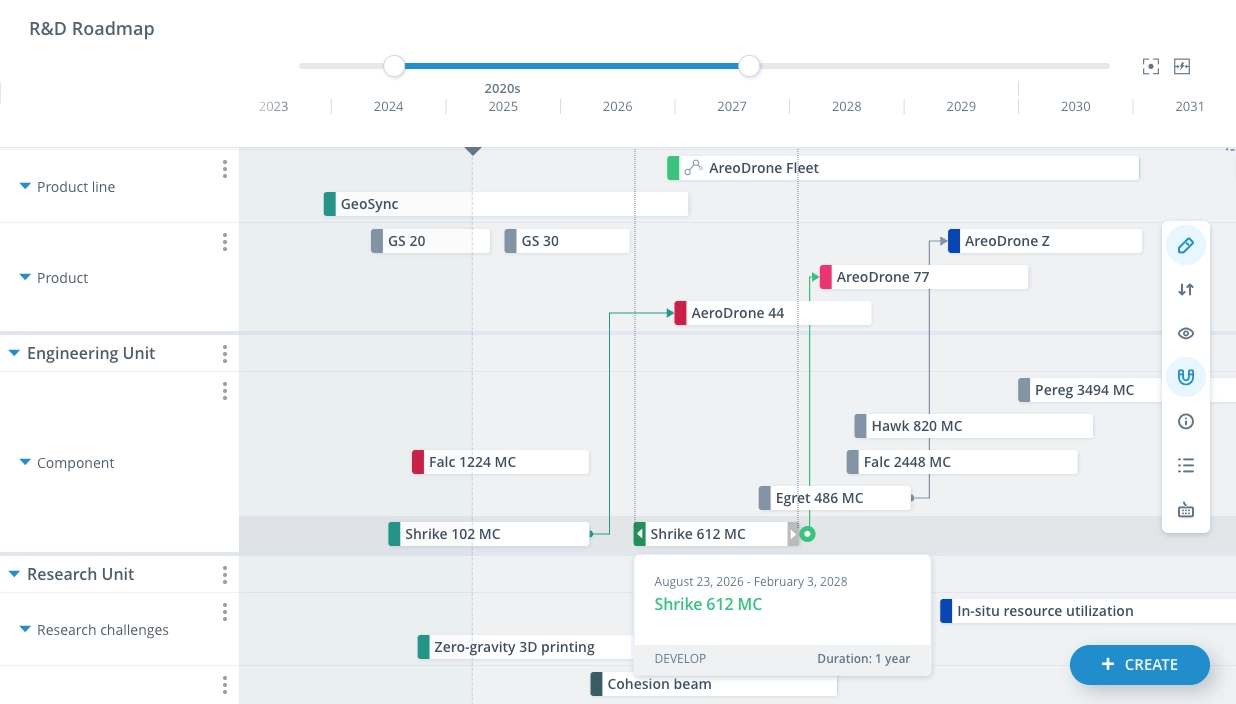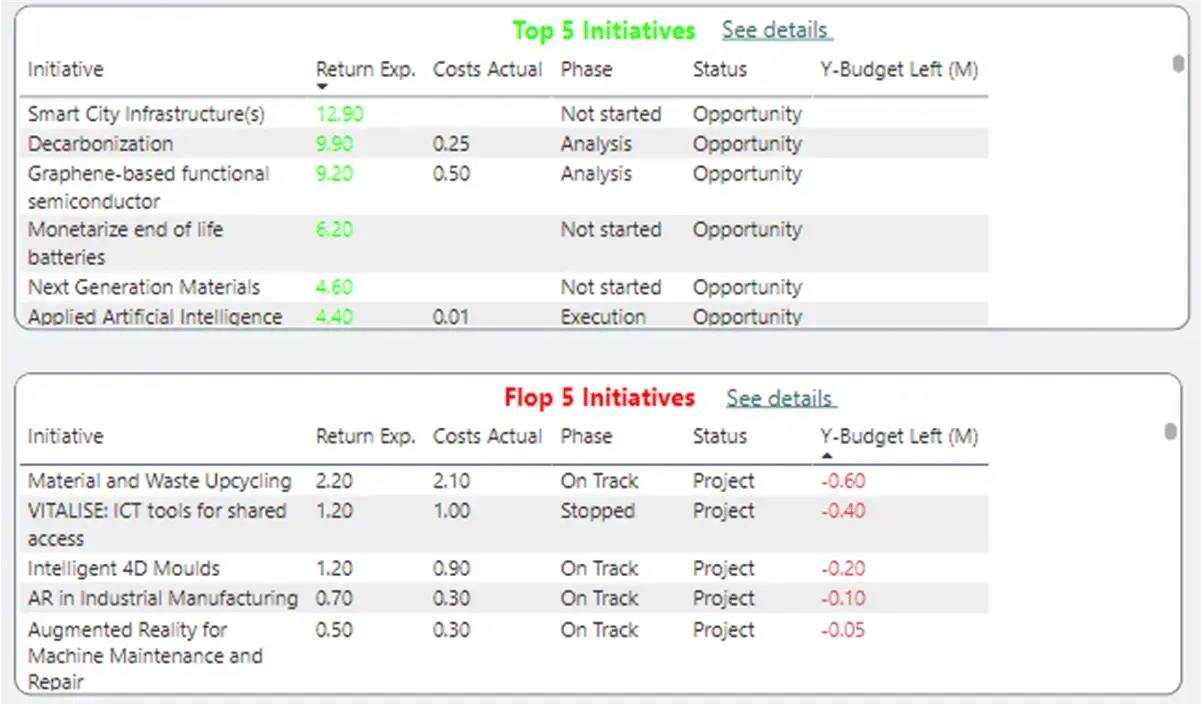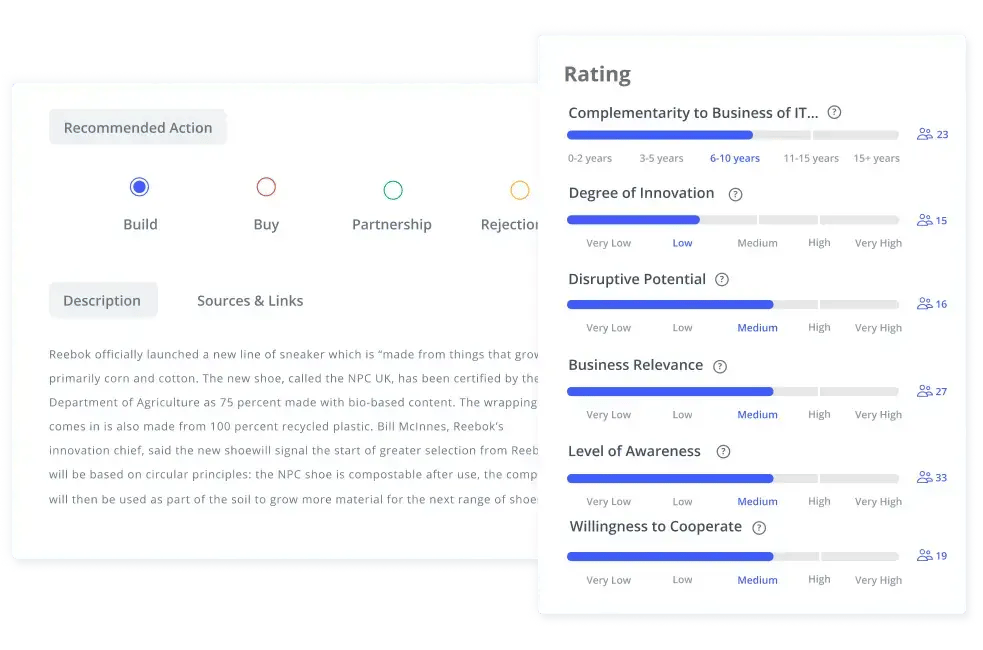Technology moves fast—management needs to move faster. In 2026, success means more than keeping up.
It’s about making use of artificial intelligence, replacing rigid structures for faster decisions, and aligning every tech move with real business value to ensure smooth business operations.
Here are six best practices shaping the way leading organizations plan, prioritize, and deliver results through technology.
What is technology management
Technology management means using tools, processes, and teams to guide tech development. It enhances the ability to drive digital transformation and measurable business value, helping organizations stay competitive.
This process includes planning, integration, development, and oversight. It also supports better decisions along the critical steps of the entire tech lifecycle. Strong management avoids risks and improves time-to-market.
How to overcome the biggest challenges in technology management
Unclear investment directions can stall progress. Managing these challenges, such as integration, data overload, or skill gaps, is crucial. Overcoming these challenges requires structure and clear goals.
Evaluating the potential of new technologies is another significant challenge for future growth. The use of project management tools to streamline workflows helps align processes across operations, development, and leadership.
What are the key roles in technology management
Technology management involves multiple professionals working together. Each role brings unique value to the successful discovery and development of new technologies. Clear roles reduce friction and improve risk mitigation.
Careers in technology management offer diverse opportunities, with strong demand for skilled professionals and the potential for significant salaries.
CTO and board of directors
The CTO and board set direction. They focus on business alignment, competitive advantage, and resource allocation. Their decisions shape the future of technology in the organization.
Technology scouts and technology managers
Scouts identify emerging technologies and trends. Managers evaluate, plan, and integrate these into existing systems. Together, they help organizations stay ahead and manage risk.
Engineering and technology management teams
These teams develop, test, and implement solutions. They balance cost, speed, and quality. Their work ensures that strategic objectives turn into future results.
What is a technology strategy?
A technology strategy connects development goals to business needs. It involves creating detailed plans for projects (Exhibit 1). Without one, organizations lose focus and fall behind.
A strong strategic plan is user friendly, measurable, and adaptable. It supports educated decisions and helps manage change. Leaders must revisit it often to stay relevant.

Exhibit 1: Technology strategy development framework
Technology management process
The technology management process helps organizations turn ideas into results. It links new product development, operations, and business goals. Each step plays a role in ensuring that technology investments create value.
Aligning technology strategy with business goals
A clear technology strategy supports the company’s vision. It ensures that people, processes, and projects serve core objectives like new profits, efficiency, and customer value. Without alignment, even advanced technologies risk becoming unused or misdirected.
This alignment requires regular communication between tech leaders and business stakeholders. Goals must be specific and measurable. The strategic plan documents should guide both short-term and long-term priorities.
Identifying and evaluating emerging technologies
Emerging technologies offer a competitive advantage if adopted at the right time. Organizations must scan for trends across industries and regions. This includes AI, sustainable materials, or data analytics. Cloud computing is also crucial in identifying and evaluating these emerging technologies.
Technology scouts play a key role here. They assess feasibility, readiness, and relevance to operations. Scouting should be ongoing and backed by structured evaluation criteria (Exhibit 2).

Exhibit 2: RICE scoring model
Developing and prioritizing technology roadmaps
A technology roadmap is created to turn vision into action. It shows what will be built, when, and why. It also helps avoid duplication and unclear handovers between teams (Exhibit 3).

Exhibit 3: The structure of a technology roadmap
Prioritization is critical. Resources must go to technologies with high potential impact and low implementation risk. The roadmap should be reviewed quarterly to reflect new insights and market shifts.
Implementing clear governance and funding models
Rigid structures speed up decisions and keeps teams accountable. This means using short approval cycles, small expert groups, and milestone-based funding.
Funding models must support fast iteration. Rather than committing large budgets upfront, teams earn continued investment by hitting clear goals. This approach cuts waste and builds momentum. Compliance with regulatory standards is also crucial in these governance and funding models to ensure ethical and secure AI applications (Exhibit 4).
Exhibit 4: The RACI matrix template
Best practices for effective technology management in 2026
In 2026, effective technology management means adopting modern practices to work faster, smarter, and with more agility. Leading organizations are replacing outdated systems with new models that boost operational efficiency, reduce resource use, and drive competitive advantage.
Replace rigid governance with agile steering committees
Traditional, hierarchical decision-making slows progress. Leading organizations now form agile, expert-driven “flash committees” that meet bi-weekly to make rapid, smart decisions. These committees combine business, technical, and scientific reviews in a single session, slashing approval delays and boosting ownership among teams.
Pair AI agents with human ingenuity
AI agents are reshaping technology management by serving as research co-pilots. They automate literature reviews, extract insights from millions of sources, and suggest novel hypotheses. Rather than replacing humans, AI augments creativity.
The impact of AI on R&D is expected to be significant, driving digital transformation and transforming research methodologies.
Example: Siemens found that AI-generated ideas scored higher than human ideas on 7 of 8 criteria in an internal idea challenge.
Treat technology portfolios like venture portfolios
Static budgets are being replaced with venture-style funding models. Projects receive milestone-based investments and must prove technical or commercial viability before further funding.
This approach ensures that only high-potential, market-aligned initiatives survive. Skilled technology managers are in high demand due to their potential to navigate and manage these dynamic funding environments.
In 2025, ITONICS engaged in over 1,000 conversations with global R&D leaders to uncover what’s next for innovation, technology, and portfolio management. The result? Five sharp trends that redefine how organizations will drive R&D success in 2026 and beyond.
Adopt quantum-like experimentation
Rather than testing one hypothesis at a time, leading R&D teams now run multiple experiments simultaneously using AI and digital twins. This allows them to compare options in real time, optimize faster, and conserve resources.
Quantum computing is also becoming increasingly relevant in experimentation, offering the potential to solve complex problems more efficiently than traditional computing.
Restructure the technology portfolio for value
Economic uncertainty has driven a shift from speculative moonshots to ROI-focused initiatives. Projects now require a clear business case, market validation, and alignment with strategic goals. This improves financial resilience and reduces waste.
Example: 3M reoriented its R&D portfolio toward market-ready projects, manufacturing efficiency, and sustainable materials. Additionally, considering the environmental impact of new technologies is crucial for promoting sustainability in R&D.
Integrate technology planning and roadmapping
Successful technology management in 2026 requires clear visibility into the technology lifecycle, development priorities, and emerging technological trends. Dynamic technology roadmaps and planning frameworks ensure alignment between technical capabilities and business strategy.
Best practice: Use digital software to integrate roadmaps with real-time data and stakeholder input for more adaptive planning.
Tools supporting technology management best practices
Technology roadmaps
A technology roadmap is a strategic solution that helps businesses chart a course through technological challenges, aligning R&D activities with long-term business goals (Exhibit 5). It provides a structured approach to mapping out investments, identifying new technological assets, and ensuring strategic fit with competitive needs.
Roadmaps integrate timeline-based planning, showing how research, new product development, and improvement evolve over time. Organizations use effective R&D methods to prioritize projects, manage risk assessments, and track R&D progress.

Exhibit 5: Technology roadmap visualises workflows and timings
By using technology roadmaps, organizations create numerous benefits. They enhance decisions, improve resource distribution, and drive their potential ROI.
Technology portfolio dashboards
A research and development portfolio dashboard provides a real-time overview of R&D activities, enabling data-driven decisions and oversight of all its assets (Exhibit 6). It consolidates key metrics, including investments, status information, risk evaluation, and budget allocation.
Dashboards help businesses track research results, monitor R&D portfolio performance, and ensure buy-in. They enhance visibility, allowing leaders to prioritize high-impact programs and optimize immediate profit. Having the right skills is crucial for using these dashboards effectively.

Exhibit 6: Dashboards monitor real-time developmentstosupportdecision-making
By integrating a structured monitoring process, research and development portfolio dashboards drive strategic value and value appropriation.
AI agents for aligned decision making and gap spotting
AI agents enhance R&D portfolio management by ensuring fit, detecting gaps in R&D portfolios, and optimizing investments. They provide data-driven insights and avoid the time consuming act to refine decisions.
-
AI-powered analytics tools analyze R&D activities, detect inefficiencies, and identify new promising technological trends.
-
Predictive modeling agents assess environmental trends and forecast lifecycle risks.
-
AI-driven resource allocation tools optimize budget planning and improve asset management.
-
Automated portfolio monitoring agents continuously track R&D progress and ensure improvement.
By leveraging these artificial intelligence solutions, organizations improve their operations with lower effort, eliminate unknown gaps in strategies, and enhance decisions for R&D success. Developing problem-solving skills is crucial for effectively using these artificial intelligence agents, as it enables better handling of complex challenges in technology management.
Automatic spotting of emerging technologies
In 2026, spotting emerging technologies no longer relies on manual research alone. Leading organizations use AI-powered systems to scan patents, publications, and trend databases automatically. This reduces time commitment and ensures that no critical signal is missed.
The role of the internet in spotting emerging technologies is crucial, as it enables real-time data collection and analysis from various sources, ensuring organizations stay ahead in the rapidly evolving digital landscape.
Technology radars
Technology radars help visualize these findings (Exhibit 7). They allow teams to map technologies based on maturity, relevance, and potential business impact.

Exhibit 7: Technology radars visualize trends and important outcomes
By customizing radar views, managers can focus on what truly matters—whether that’s digital transformation, operational efficiency, or sustainability. User feedback is crucial in refining these radars, ensuring they meet the evolving needs and preferences of users.
Task tracking and collaboration
But discovery alone is not enough. Execution depends on strong task tracking and collaboration tools. Integrated platforms help engineering and technology management teams align on goals, assign responsibilities, and monitor progress in real time.
This boosts transparency, reduces handover issues, and supports faster decision-making. These tools are also crucial for students in technology management programs, as they facilitate hands-on learning and collaboration on real-world projects.
Customizable workflows with transparent technology evaluation process
Effective technology management thrives on collaboration between different departments, including engineering, marketing, finance, and operations. Cross-functional teams enhance knowledge sharing, ensure that R&D activities align with market needs, and accelerate innovation (Exhibit 8).

Exhibit 8: Configure own rating criteria tailored to specific needs
By integrating cross-disciplinary expertise, organizations can mitigate project risks, align technological development with customer demands, and increase the speed of product commercialization. Tools like digital collaboration platforms and knowledge management systems can support seamless information exchange and project coordination.
Add new ideas with open innovation and external partnerships
Incorporating open innovation into R&D strategy expands a company’s access to new ideas, technologies, and expertise. Bosch, for example, collaborates with startups, universities, research institutions, or industry partners to tap into external knowledge and accelerate breakthroughs.
By leveraging external partnerships, organizations can reduce the cost of innovation, share risks, and stay competitive in rapidly evolving industries. Licensing agreements, co-innovation models, and innovation ecosystems foster a dynamic R&D portfolio that drives sustained growth.
Successful corporate technology management examples
Successful R&D portfolio management relies on well-structured research and development processes that drive innovation, optimize investments, and ensure sustained value.
Unlike traditional projects, which have clear objectives, well-defined schedules, and budgets, R&D projects are characterized by uncertainty and unpredictability, complicating planning and execution.
This section highlights real-world examples of organizations implementing strategic R&D frameworks, leveraging stage-gate processes, and applying digital R&D platforms to develop and scale breakthrough innovations effectively. Obtaining a technology management degree is crucial for successful implementation, as it equips professionals with the necessary skills to navigate and manage the complexities of modern technology landscapes.
Merz R&D scouting team
The R&D scouting and external innovation teams at Merz Therapeutics are responsible for establishing and evaluating the competitive landscape of the current product portfolio (Exhibit 9). Which new products and companies have entered the market? Which emerging technological trends could be used to further grow the portfolio?

Exhibit 9: Trend scouting at Merz Therapeutics
Since 2018, R&D scouting has been supported by ITONICS to more transparently gather and evaluate insights on activities in the business environment. This allows for informed decisions to expand the company‘s portfolio. Careers in R&D scouting offer significant opportunities for those interested in technology management and innovation.
Cisco R&D scouting team
Innovation is an integral part of the Cisco DNA. With 25,000 engineers, more than 19,000 patents, and leadership positions in 18 different IT categories, Cisco already enjoys a rich history of high-tech innovation. Cisco has successfully managed to stay one step ahead of the competition. Educational courses are crucial for R&D professionals to stay updated with the latest technological advancements and maintain this competitive edge.
This success is an example of Cisco’s unique method of structuring, classifying, evaluating, and visualizing novel technological opportunities. In particular, this approach aims at an early identification of new technological trends, enabling transparent and strategic decision-making, and promoting innovation.
Improve your technology management. Today.
The ITONICS Innovation OS is the modular software that gives R&D teams the tools they need to manage research and development portfolios effectively. Student engagement is crucial in technology management programs to ensure practical learning outcomes and prepare students for successful careers.
Reduce costs and improve efficiency: Get a holistic view of your R&D portfolio. ITONICS helps teams spot redundant or underperforming assets, so they can reallocate capacity to higher-benefit initiatives that deliver better returns.
Make informed investment decisions: Evaluate technological trends and opportunities based on your company’s goals. Use ITONICS to track current spending on existing assets and identify where reallocation in the research and development portfolio is necessary when more promising R&D opportunities emerge.
Evolve your R&D portfolio with clear roadmaps: ITONICS lets you plan the lifecycle of every asset in your technological portfolio, mapping out upgrades, replacements, and decommissioning with clear timelines and milestones.
FAQs on technology management
What is technology management
Technology management is the process of planning, developing, and controlling an organization’s use of technology to meet strategic goals. It involves overseeing technology lifecycles, aligning tech initiatives with business needs, and ensuring the right technologies are adopted at the right time.
Why is technology management important?
Effective technology management helps companies stay competitive, reduce risk, and ensure sustainable growth. It enables organizations to make informed decisions on technology investments, anticipate market shifts, and drive innovation by leveraging emerging tech.
What are the key activities in technology management?
Key activities include technology scouting, evaluation, portfolio management, lifecycle tracking, risk assessment, and roadmapping. These functions ensure that technology decisions are aligned with business strategy and market developments.
What is technology scouting?
Technology scouting is the practice of identifying and evaluating new and emerging technologies that could impact a business. It helps innovation and R&D teams discover trends, assess risks and opportunities, and build a pipeline of relevant technologies.
What are the challenges in managing technology?
Challenges include identifying relevant technologies early, managing complexity across business units, prioritizing investments, and aligning tech adoption with long-term goals. Without a structured approach, businesses risk wasted investments and missed opportunities.
How can software help with technology management?
Technology management software helps centralize data, visualize technology trends, and track maturity levels. Tools like ITONICS support scouting, evaluation, and roadmapping in one platform—making it easier to align technology strategy with execution.
How do digital tools reduce time spent on manual innovation tasks?
Digital innovation platforms like ITONICS automate routine workflows, signal scanning, and reporting - freeing teams from manual updates and spreadsheet‑based tracking. So they can focus more on insight, value, and strategy.



